Brussels sprouts are small, green vegetables that look like mini cabbages. They have been around for centuries and were first cultivated in Brussels, Belgium. Their nutty flavor and crunchy texture make them a popular side dish. In this article, you’ll learn about Brussels sprouts – from their nutrition to how to cook them. Please keep reading to find out what makes them so special!
What is Brussels?
Brussels sprouts are cruciferous vegetables related to cabbage plant and broccoli plant. They grow on long stalks in bunches and contain numerous small, tightly packed green buds that resemble miniature cabbages. Brussels sprouts are usually harvested in the late summer or early fall.
History and Origin of Brussels Sprouts:
Brussels sprouts have been around for centuries. They were first cultivated in what is now Belgium, but the exact origin of the vegetable is unknown. The modern Brussels sprout was developed in the 17th century by farmers in the Brussels region, who crossbred wild cabbage plants to create a new variety with edible buds. From there, they spread across Europe and eventually made their way to America in the 19th century.
Types of Brussels Sprouts:
There are several different types of Brussels sprouts, including:
- Green Brussels Sprouts – The most common variety. These have a mild flavor and a slightly crunchy texture.
- Red Brussels Sprouts – These rare varieties have a sweeter taste than green ones and tend to be more tender.
- White Brussels Sprouts – These unusual sprouts have a stronger flavor than green or red sprouts. They’re also much larger.
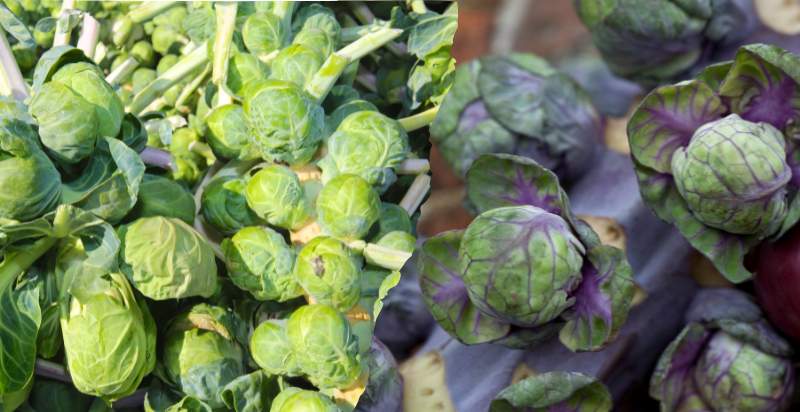
Description of Brussels Sprouts:
Brussels sprouts are green and have a round shape. The buds can range in size from one-half to three inches in diameter. They have a slightly crunchy texture when raw but become softer when cooked. Brussels sprouts have a mild, nutty flavor with hints of bitterness.
Cultivation of Brussels Sprouts:
Brussels sprouts are grown in temperate climates around the world. They require fertile soil, plenty of water, and full sun exposure. The plants grow best when temperatures remain between 40°F and 75°F (4°C to 24°C).
Nutrition Information of Brussels Sprouts:
Brussels sprouts are rich in vitamins A, C, K, B6, folate, and fiber. They also provide an excellent source of antioxidants and minerals such as iron, manganese, and potassium. Just one cup of cooked Brussels sprouts provides more than 100% of your daily recommended intake for vitamin C!
The Health Benefits Of Brussels Sprouts:
Brussels sprouts are loaded with vitamins and minerals essential for good health. They contain powerful antioxidants which can help reduce inflammation, protect against cancer and heart disease, and boost your immune system. Eating Brussels sprouts can also promote healthy digestion by aiding in the balance of bacteria in the gut.
What are the Uses of Brussels Sprouts?
Brussels sprouts can be enjoyed in a variety of ways. They can be boiled, steamed, roasted, or eaten raw. Popular recipes include Brussels sprouts salad, stir-fried dishes, and side dishes to accompany meat or fish. You can add Brussels sprouts to soups, stews, pasta, and casseroles for a nutritional boost.
No matter how you decide to enjoy Brussels sprouts, they are sure to be an easy and delicious addition to your meals! If you want to grow Brussels Sprouts, here is everything you need to know to start.
In recent decades, the popularity of Brussels sprouts in the United States has surpassed that of their popular European counterparts. Like other members of the cabbage family, the Brussels sprout is known for being challenging to grow. However, with basic knowledge, proper planting techniques, and adequate care throughout its growing season, you can successfully grow Brussels sprouts in your garden or backyard!
Where To Plant Your Brussels Sprouts?
When choosing where to plant your Brussels sprouts, remember that they require plenty of sunlight – at least six hours per day is ideal – and good soil drainage. The plant prefers cooler climates and does not do well in extreme heat. Choose a spot with plenty of sunlight and good air circulation to give your Brussels sprouts the best chance at success.
What Supplies Do You Need To Plant Brussels Sprouts?
Before planting, you’ll need to have all the necessary supplies. This includes quality potting soil, compost or manure fertilizer, mulch, seeds or seedlings, and tools such as a spade and trowel. Additionally, if you’re starting with seeds rather than plants, you may also need peat pots or trays for germination.
How To Plant Your Brussels Sprouts?
Whether using seedlings or seeds, begin by preparing your soil – loosen it up with a spade and mix in some compost or manure fertilizer to improve drainage and nutrient levels. Dig holes or furrows 8-12” apart, depending on the size of the plants you are planting. If you’re using seeds, plant them 1/4” deep, spaced 3-4” apart; if seedlings, place them at the same depth as they were previously growing. Once your sprouts are planted, water them lightly but thoroughly and then cover them with mulch to help retain moisture and discourage weeds.
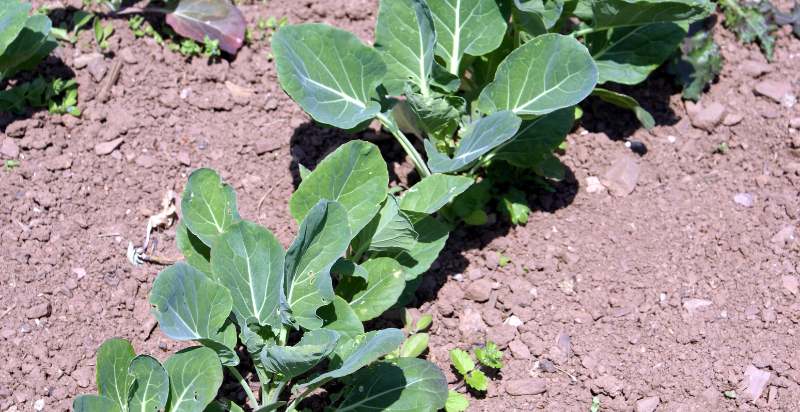
Ongoing Care for Your Brussels Sprouts
Regular maintenance is essential to ensure the healthy growth of your Brussels sprouts over their growing season – typically 80-100 days. This includes providing adequate water (1-2 inches per week) and fertilizing every four to six weeks. Additionally, inspect your plants regularly for signs of pests or disease; if present, take action immediately to treat the issue. Finally, don’t forget to harvest your Brussels sprouts when they reach full maturity – usually between 1” and 2” in diameter.
How to Care for Brussels Sprouts?
Once your Brussels sprouts are harvested, you’ll want to store them correctly to maximize their shelf life. To do this, remove any damaged or discolored leaves and place the sprouts in a ventilated container with a damp paper towel or cloth at the bottom. Store them in the refrigerator for up to two weeks – if done correctly, they should stay fresh and crunchy!
Finally, don’t forget about ongoing care for your Brussels sprout plants even after harvesting. Remove old foliage and trim back stems, as well as any dead or diseased material from the base of the plant. Additionally, add more compost or fertilizer after each harvest to ensure that your next crop has the nutrients for healthy growth.

Preventions From Pests and Diseases:
To keep your Brussels sprouts in the best condition, it’s important to take preventative measures against pests and diseases. This includes cultivating healthy soil with plenty of organic matter, rotating crops each season, and removing any diseased or dead plants or plant material from the garden. Additionally, you can use various methods to discourage common pests such as aphids or cabbage worms, including companion planting or natural predators like ladybugs. Finally, inspect your plants regularly for signs of infestation or disease and act quickly if necessary!
By following these tips, you will have all the necessary information to give your Brussels sprouts the best chance at success. With some knowledge and preparation, you’ll be on your way to growing healthy plants that yield delectable harvests of Brussels sprouts. Happy planting!
Some additional tips for growing Brussels Sprouts:
- Plant your Brussels sprouts in full sun or partial shade. While they can tolerate some shade, they’ll produce more pods if they receive at least six hours of direct sunlight each day.
- Keep the soil consistently moist by providing an inch of water per week through rainfall or irrigation. Soaker hoses are a great way to provide water without disturbing the roots of your plants.
- Pinch off any flowers that appear before harvesting, as this will encourage more sprout production.
- When harvesting your Brussels sprouts, avoid pulling out entire plants and instead carefully twist off each pod from the stem. This will help ensure that you get the most out of your crop.
- Rotate your Brussels sprouts with other crops to reduce the incidence of pests and diseases by preventing them from building up in the soil over time.
- When planting, ensure enough space between each plant – about 12-18 inches – to ensure good air circulation. This will help prevent mildew and other fungal diseases from developing.
- Lastly, don’t forget to enjoy the harvest! Brussels sprouts can be cooked in various ways, such as steamed, roasted, or sautéed for a delicious side dish that is sure to please.
Following these tips should help ensure that your Brussels sprouts thrive and you can reap the rewards of a bountiful harvest! With a few simple steps, you’ll be well on your way to creating delicious and nutritious dishes for you and your family.
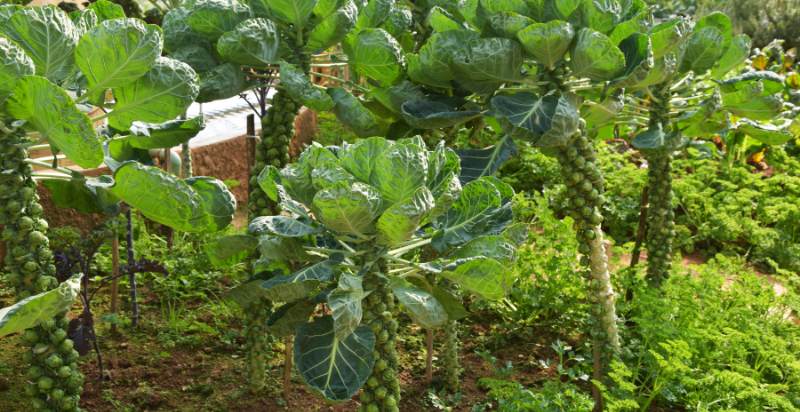
How to Harvest Brussels sprouts?
Harvesting Brussels sprouts is relatively simple – when the individual buds reach 1”-2” in diameter, they are ready to be picked. Start by cutting off the sprout stalk at the base and gently twisting each bud off the stem. Be sure to remove any damaged or discolored buds as well, as these will not store well. Finally, place your freshly harvested sprouts into a ventilated container with a damp cloth or paper towel at the bottom and store them in the refrigerator for up to two weeks for maximum freshness!
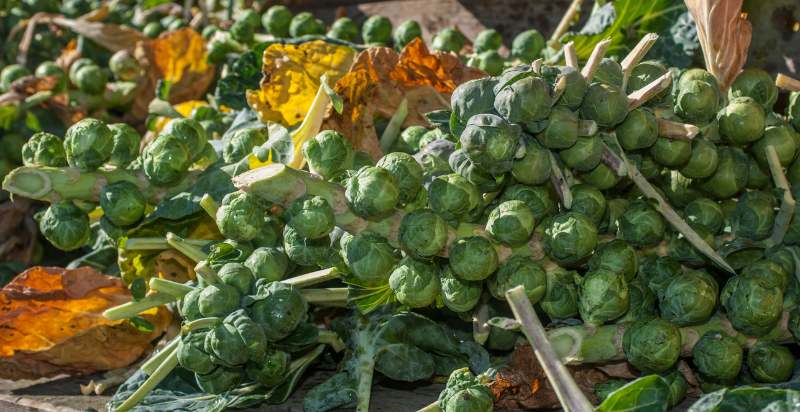
How to Store Brussels Sprouts?
The best way to store Brussels sprouts is in a ventilated container with a damp cloth or paper towel at the bottom. Place your freshly harvested sprouts into the container and store them in the refrigerator for up to two weeks. To ensure that they stay fresh and crunchy, remove any damaged or discolored buds before you store them. Additionally, it’s important to use an airtight lid on your container if possible – this will help retain moisture and prevent dehydration. Keeping these tips in mind, you’ll have perfectly delicious Brussels sprouts all season long!
How to Use Brussels Sprouts?
Brussels sprouts are incredibly versatile and can be used in various dishes. For example, you can roast them with olive oil and garlic for a savory side dish or bake them into a cheesy gratin. Additionally, they can be steamed or sautéed and served alongside your favorite protein. Finally, Brussels sprouts are great for making salads and slaws or can be eaten raw as a crunchy snack. No matter how you incorporate them into your meals, you’re sure to enjoy the delicious taste of Brussels sprouts!
Have fun with your Brussels sprout harvests, and get creative in the kitchen!
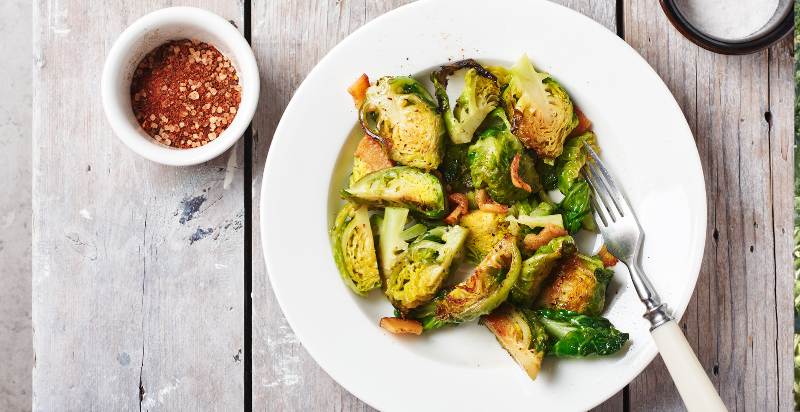
Potential Risk From Brussels Sprouts?
Although Brussels sprouts are a great addition to any diet, one potential risk is associated with this vegetable. Since they are members of the Brassica family, they contain substances called glucosinolates that can interfere with thyroid function in some individuals. If you have been diagnosed with an underactive thyroid or are concerned about these compounds, consult your doctor before adding Brussels sprouts to your diet.
Conclusion
Brussels sprouts are a delicious and nutritious vegetable that can bring plenty of flavor and nutrition to any meal! You’ll have no problem enjoying these tasty little treats with proper care, harvesting, and storage methods all season long. Just remember to give them the attention and care they need to ensure healthy growth and bountiful harvests and keep an eye out for potential pests or diseases. Also, consult your doctor if you have any concerns about their impact on thyroid function. Now that you’ve all the necessary information, it’s time to grow! Happy harvest!
Happy harvesting! 🙂
- Everything You Wanted to Know About Red Tamarillos - June 2, 2025
- A Guide to Tulips: Everything You Need to Know & More… - June 2, 2025
- Guanabana: Description, Flavor, Benefits, And Uses - May 27, 2025

3 thoughts on “What is Brussels Sprout? How to Plant, Grow, and Harvest Brussels Sprouts ”
Comments are closed.